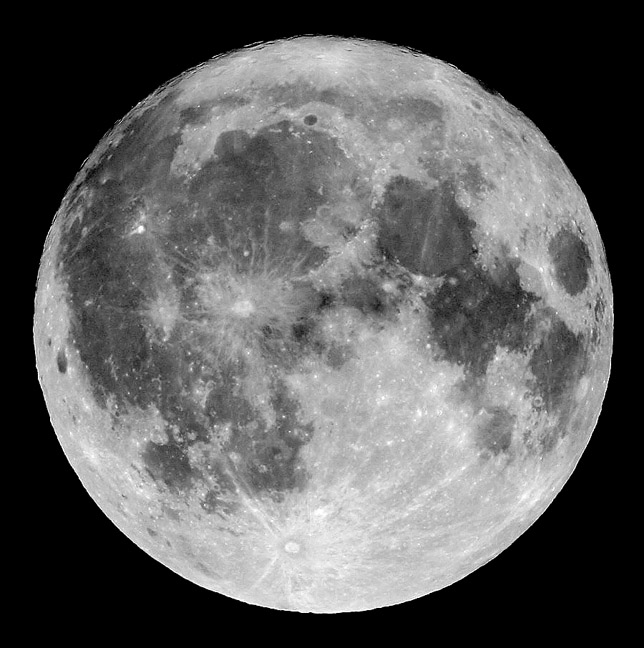
image byElias Chasiotis, Markopoulo, Greece
Have you noticed the endless media hype about a blue Moon on May 31st? How many people do you think actually thought it would be blue in color? Why do the media concentrate on something nearly physically meaningless (the phrase has come to mean two full Moons in one month), but rarely ever talk about scientifically significant things you can learn by looking at the Moon? Why no stories about how the bright material visible at full Moon is the frozen scum of aluminum-rich rocks that floated to the surface 4.5 billion years ago when the Moon was molten? Or what about the dark splotches, easily seen by eye, that once were incandescent outpourings of lava flowing hundreds of kilometers across the surface? And did you notice that the Moon was not completely full - as evidenced by the shadowed craters along the northern limb - because it was nearly 6° south of the ecliptic? What defines full? Is it just when the Moon is 180° away from the Sun? Does real full only occur during those lunar eclipses when the Moon is on the ecliptic? Any questions?
Technical Details:
May 31, 2007, 22:48 UT. Bresser Skylux 70mm + Canon EOS 400D
Related Links:
What’s a Blue Moon?
Now you can support LPOD when you buy ANY book from Amazon thru LPOD
COMMENTS?
Register, and click on the Discussion tab at the top of the page.



